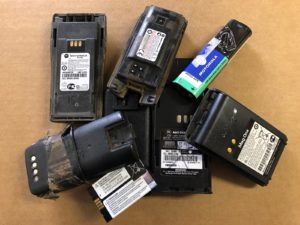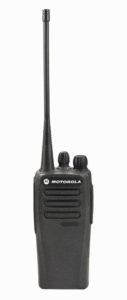bent 2-way radio at the repair center
this is not good at all


In the radio repair industry we have seen many ways end-users damage their radios. One of the more common types of portable radio damage is compression or crush damage. When this happens the component board, which is very rigid, can become bent. How does this happen? Usually it is a from the user sitting on the radio after it has been placed in their back pocket or in the seat of a vehicle.There are a multitude of problems that can be caused when your component board gets bent in this way, and none of them are good.
 Usually the exterior house of the radio miraculously can bounce back into shape follow a squeeze (unless it is of the extreme nature). What you can’t see is the effect it has had on the board inside. Many times the radio user will not realize the component board has been damaged.
Usually the exterior house of the radio miraculously can bounce back into shape follow a squeeze (unless it is of the extreme nature). What you can’t see is the effect it has had on the board inside. Many times the radio user will not realize the component board has been damaged.
The Motorola radio pictured arrived from Mississippi with only exterior scuffs, and no additional notes. The real damage wasn’t seen until the technician had opened the CP200d radio. As you can see in the pictures, the metal shields were dented in, and the green component board was warped. Not seen in these photos, underneath the shields there are likely components which have popped off the board. The layers of the board and traces are likely cracked. Unfortunately in a case such as this the damage is fatal. The radio had to be deemed non-repairable.
At the radio repair center we’ve seen radios that have been driven over by a truck be repairable. We rely on our highly skilled technicians to assess each radio and determine if it can be repaired or needs to be replaced. If you have a radio you believe to have compression damage, go ahead and send it in the the radio repair center. As radios have became smaller we see more compression damage. Some damage is as simple as the user placing the radio in their back pocket and sitting on it. Other damage is more serious and caused by machinery or vehicles.
crush damaged 2-way radio batteries
Another area of concern would be the battery that was on the radio at the time the crush damage happened. The cells in the battery could be come unstable and be a hazard. Much like the radio housing the battery’s exterior may not show the damage within. If the compression was enough to deem the radio non-repairable, the battery should also be retired to recycling. (Side note: Most Lowe’s, Home Depot, and Best Buy stores have battery recycling centers near the front of the store.)
If you find yourself with a compression/crush damaged radio, we’ll be happy to take a look at it and determine if it is repairable. Radio repair is generally around one third the cost of new.
~cl
 It happens more often than you might think… an employee comes in to tell the boss “someone ran over my radio”. It is not something a business owner or manager wants to hear. The
It happens more often than you might think… an employee comes in to tell the boss “someone ran over my radio”. It is not something a business owner or manager wants to hear. The 




 Our customers in the nursery and greenhouse business are starting to prepare for Spring.
Our customers in the nursery and greenhouse business are starting to prepare for Spring.  The newest radio to come along is the
The newest radio to come along is the 
